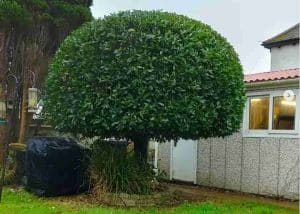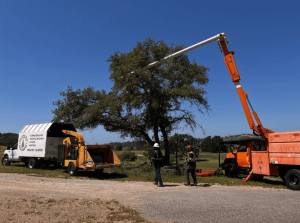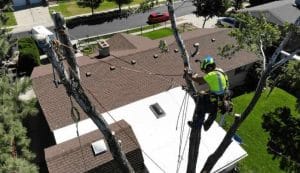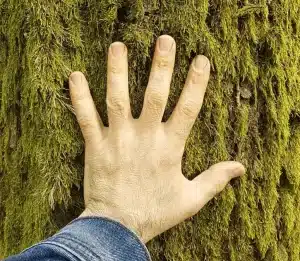Not sure whether you need to fill dirt or topsoil for your Ormond Beach project? Here’s the short answer: fill dirt is best for creating a solid base or leveling the ground, while topsoil is used for growing plants, grass, and gardens. These two materials serve totally different purposes, and choosing the wrong one can lead to soggy lawns, shifting patios, or stunted plants. One of our favorite landscaping tips for coastal Florida is using compacted fill dirt beneath topsoil to fight erosion and storm damage. In this guide, we’ll show you how to tell them apart, when to use each one, and how to get the best results for your yard whether you’re planting, building, or both.
Table of Contents

Why Does Soil Choice Matters?
Picture this: you’ve spent time and money creating a beautiful lawn or patio, but after a stormy summer, your pavers shift or your grass wilts. In many cases, this happens because the wrong soil was used. Fill dirt and topsoil have very different roles. In areas with fast-draining sandy soils and frequent heavy rains, choosing the right material is key to long-term success.
The right soil protects your investment, prevents erosion, and helps plants thrive. No matter your neighborhood or lot size, this decision can impact everything from curb appeal to property value.

Common Landscaping Challenges in Coastal Areas
Homeowners in coastal regions often face several location-specific issues:
- Sandy Soil: Doesn’t retain nutrients or water well, making it tough for plants to grow.
- Heavy Rains: From June through November, tropical storms and hurricanes can wash away loose soil or flood your yard.
- Salt Air: Homes near Granada Boulevard or Halifax River face salt spray that can damage non-native plants.
- Uneven Terrain: Sloping lots and low spots are common and often need leveling or drainage correction.
These conditions make the correct soil material essential for a lasting, low-maintenance landscape.
What Is Fill Dirt and When Should You Use It?
Fill dirt is made of subsoil taken from below the top layer of earth. It contains little organic matter and is mostly a mix of clay, sand, and small rocks. While not suitable for planting, it’s perfect for shaping land or creating a sturdy base.
Key Benefits
- Cost-Effective: At $8–$15 per cubic yard, fill dirt is affordable for large projects.
- Compacts Well: Creates a stable foundation that won’t shift during Florida’s heavy rains.
- Ideal for Shaping: Great for building up low areas, backfilling, or grading a slope.
Best Uses
- Patio and Driveway Bases: Use a 4-inch layer to prevent sinking or shifting.
- Fixing Low Spots: Fill soggy areas that hold water after storms.
- Grading for Drainage: Raise areas to redirect water flow away from your home.
Pro Tip: Always compact fill dirt in 4–6 inch layers using a plate compactor to prevent future settling.
What Is Topsoil and Why Does It Matter for Plants?
Topsoil is the top few inches of earth, rich in nutrients and organic matter. It’s what plants need to grow strong roots and produce flowers, fruits, or lush turf.
Key Benefits
- Nutrient-Rich: Packed with essential nutrients and microorganisms that support healthy growth.
- Moisture-Retentive: Holds water better than native sandy soil, reducing the need for frequent watering.
- Clean and Screened: Quality topsoil is filtered to remove rocks and weeds, making it ready for planting.
Best Uses
- New Lawns: Apply 2–4 inches before seeding or laying sod.
- Flower Beds: Mix with native soil to help ornamentals like hibiscus or roses thrive.
- Vegetable Gardens: Use in raised beds for crops like tomatoes, peppers, and herbs.
- Planting Trees or Shrubs: Backfill planting holes with topsoil for faster root development.
Pro Tip: Choose screened topsoil to avoid clumps, rocks, or weed seeds. Blends enriched with compost are best for planting in salty or sandy areas.
Fill Dirt vs. Topsoil: A Quick Comparison
| Feature | Fill Dirt | Topsoil |
| Composition | Clay, sand, and small rocks | Loam, organic matter, and nutrients |
| Best Use | Leveling, bases for patios/driveways | Planting grass, gardens, and trees |
| Nutrient Content | Very low | High |
| Drainage & Compaction | Compacts well, poor drainage | Loose, drains well |
| Cost per Cubic Yard | $8–$15 | $25–$45 |

Coastal Climate Considerations
In coastal environments, your soil must perform under extreme conditions. Sandy soil drains too quickly and lacks nutrients. Fill dirt helps solve drainage and leveling issues, while topsoil combats plant stress caused by salt air and heat.
Local Landscaping Tips
- Test Drainage: Dig a hole and fill it with water. If it drains within an hour, your soil is sandy and will benefit from topsoil before planting.
- Fight Salt Exposure: Use compost-enriched topsoil for plants exposed to sea spray.
- Plan for Rains: Use fill dirt to level your yard and top it with quality topsoil for areas where you’ll plant.
Step-by-Step Guide to Choosing and Using Soil
1. Define Your Goal
- For leveling or hardscape foundations: Use fill dirt
- For planting or growing: Use topsoil
2. Test Your Soil
- Gritty and falls apart? You’ve got sandy soil—add topsoil for planting.
- Dense or clay-heavy? Use fill dirt for reshaping and topsoil for planting layers.
3. Calculate How Much You Need
- Measure your project area (length × width in feet).
- Decide the depth (in inches).
- Use the formula:
(Area in sq. ft. × Depth in inches) ÷ 324 = Cubic Yards Needed
Example:
100 sq. ft. at 3 inches deep = (100 × 3) ÷ 324 = ~0.93 cubic yards
4. Find a Reliable Local Supplier
Look for landscape supply companies in zip codes 32174 and 32176. Many offer bulk pricing and delivery for fill dirt or screened topsoil.
5. Prepare the Site
- Remove weeds, rocks, and debris.
- Grade the area to create a smooth and even surface.
6. Apply the Material
- Fill Dirt: Spread in 4–6 inch layers, compact each layer.
- Topsoil: Spread evenly, mix with existing soil, level with a rake.
7. Maintain Your Project
- Water gently to settle topsoil.
- Cover with mulch to prevent evaporation and weed growth.
Where to Get Fill Dirt and Topsoil
Here are some trusted local suppliers:
- Ormond Landscape Supply (near US-1 & Wilmette Ave): Offers bulk fill dirt and screened topsoil with delivery options.
- Halifax Soil & Mulch (off Granada Boulevard): Specializes in nutrient-rich topsoil blends.
- Daytona Dirt Depot (serving Ormond Beach and surrounding areas): Sells both materials with bulk pricing options.
Pricing Overview
- Fill Dirt: $8–$15 per cubic yard
Delivery: $50–$100 (varies by distance) - Topsoil: $25–$45 per cubic yard
Delivery: $75–$125 (depending on location)
Be sure to confirm delivery rates and inquire about discounts for large orders.

Maintenance Tips for Long-Term Success
- Add Mulch: Apply 2–3 inches of pine straw or wood chips over topsoil to reduce weeds and evaporation.
- Water Wisely: Water deeply but less often to promote strong root systems, especially during summer.
- Monitor Soil pH: Sandy coastal soils can become acidic. Use a pH test kit and apply lime if needed to keep it between 6.0 and 7.0.
- Let Fill Dirt Settle: Don’t walk on it until it’s fully compacted to avoid dips or uneven spots.
- Plant Local Species: Native options like coontie palm, muhly grass, and sea oats require less care and resist salt stress.
What You’ll Achieve with the Right Soil
When you choose the proper material for your landscape:
- Stable Bases: Fill dirt ensures driveways, patios, and walkways won’t shift after rainstorms.
- Green Lawns: Topsoil supports strong root growth for healthy turf.
- Colorful Gardens: Flowers and vegetables thrive in nutrient-rich soil.
- Better Drainage: Smart grading combined with topsoil solves standing water problems.
Final Thoughts: Build Your Dream Yard with Confidence
In coastal environments, landscaping success starts with the soil. Use fill dirt to build stable foundations and correct drainage, and choose topsoil to nourish grass, flowers, and trees. By understanding your yard, preparing properly, and using high-quality materials from local suppliers, you’ll enjoy a beautiful, resilient landscape for years to come.
FAQs
Where to buy fill dirt in Ormond Beach?
You can get bulk fill dirt from Ormond Landscape Supply off US-1, Halifax Soil & Mulch near Granada Boulevard, or Daytona Dirt Depot. They deliver in zip codes 32174 and 32176. Always ask about delivery fees and minimum order sizes.
Where to buy topsoil in Ormond Beach?
Topsoil is sold at Ormond Landscape Supply, Halifax Soil & Mulch, and Daytona Dirt Depot. Look for screened, weed-free mixes. Ask each supplier for soil tests and delivery costs to zip codes 32174 and 32176 before placing your order.
Fill dirt vs topsoil for lawn Ormond Beach
Use fill dirt under pavers or to level low spots—it compacts well but has no nutrients. Use topsoil on lawns and flower beds—it’s rich in organic matter, holds moisture, and helps grass roots grow strong in Ormond Beach’s sandy soil.
How much does topsoil cost in Ormond Beach?
Topsoil in Ormond Beach runs about $25–$45 per cubic yard, depending on quality and compost content. Delivery fees add $75–$125. Screened or enriched topsoil costs more but helps new grass and plants thrive in our sandy, coastal environment.
How much does fill dirt cost Ormond Beach?
Fill dirt costs around $8–$15 per cubic yard in Ormond Beach, plus $50–$100 for delivery. It’s a budget-friendly base layer for patios, driveways, and grading, but lacks nutrients, so plan to add topsoil on top if you want plants or grass to grow.
Best soil for gardens in Ormond Beach FL
For flower beds and vegetable plots, mix 4–6 inches of rich topsoil with compost. Use local screened topsoil from Halifax Soil & Mulch or Ormond Landscape Supply. This blend retains water, adds nutrients, and helps roots grow in our hot, sandy climate.
Do I need fill dirt before planting grass?
Yes—if your yard has low spots, add 4–6 inches of fill dirt first and compact it to level the ground. Then spread 2–4 inches of topsoil on top before seeding or sodding. This gives a stable base and nutrient-rich layer for healthy grass growth.
Can fill dirt wash away in heavy rain?
Loose fill dirt can erode in Ormond Beach’s summer storms. Always compact fill dirt in 4–6-inch layers and use erosion control like straw or silt fences on slopes. This prevents washouts and keeps your grading stable during heavy rainfall.




